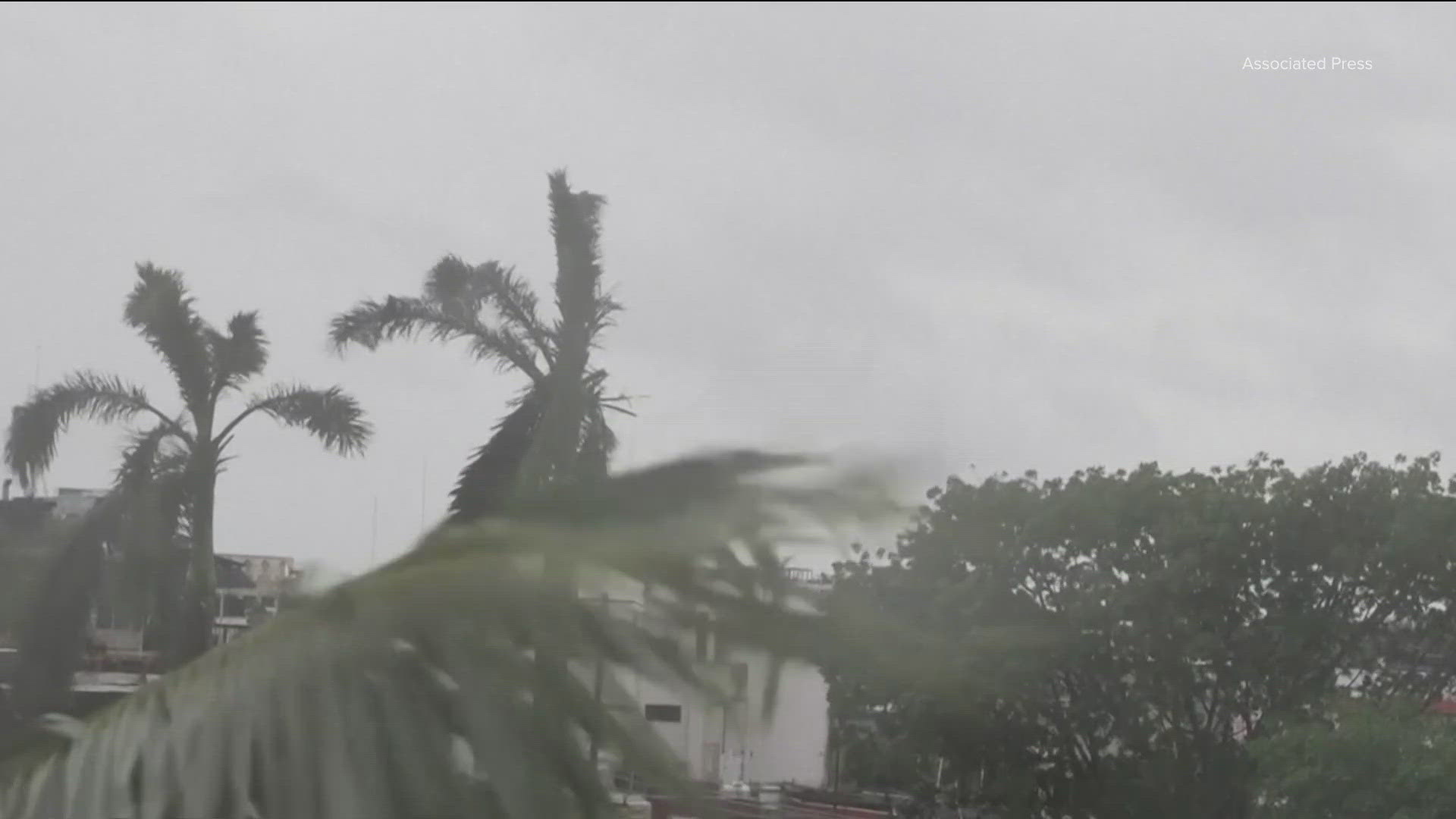AUSTIN, Texas — On Sunday afternoon, leaders with the Texas Division of Emergency Management (TDEM) and Lt. Gov. Dan Patrick held a press conference warning Texans to take Beryl seriously.
“It will be a deadly storm for people who are directly in that path,” Patrick said.
Patrick is currently serving as acting governor while Gov. Greg Abbott is overseas on a planned economic development trip.
Beryl is currently categorized as a tropical storm but could intensify into a Category 1 hurricane by the time it makes landfall at around 4 or 5 a.m. on Monday. Patrick is urging Texans to get out of that area before it’s too late.
“Trust me, you don’t want to be in a Category 1,” Patrick said. “You’re looking at winds 85, 90 [miles] an hour, you don’t want to be in the six and 12 inches of rain, you don’t want to be in the flooding.”
On Saturday, Patrick added 81 more counties in Texas to a disaster declaration, bringing the total number to 121 counties altogether.
Some safety tips Patrick wanted to remind Texans of before the storm hits are:
- Move out of the area before the storm makes landfall, because the roads will be dangerous
- Be prepared (with food, supplies, gas, etc.) so you don’t have to go out into the storm to get these items
- Never drive through flooded roadways
“What we find is this fresh water, inland flooding tends to be more of a killer of our citizens than the actual storm surge, so please, please do not drive through water,” TDEM Chief Nim Kidd said.
Kidd also said there will be guaranteed power outages, so it’s crucial to move people who are power dependent to a safe place.
For those vacationing around Corpus Christi and Galveston Island after the long holiday weekend, Patrick said he’s concerned that they aren't leaving early enough prior to the storm making landfall.
“It is a concern that because they’re not in their daily routine of watching the news, or checking their internet or checking their emails, that they may not be aware of the storm,” Patrick said.
Patrick said now is the time to call those friends or relatives who are there now, to alert them of the storm and tell them to leave.
A final warning from Patrick was to especially stay out of those waters right now because the rip currents can be deadly.
Texas leaders have been in close contact with the state’s FEMA regional administrator regarding federal assistance. FEMA has already provided the state with some response assets, like food and water and blue tarps, in addition to all of the state’s resources.
Patrick said in order for the president to grant a major disaster declaration, Texas would have to have $54 million worth of uninsured public damage and public loss, which they are hopeful it won't and don't expect will happen.
Earlier this week, the TDEM increased the readiness level of the State Emergency Operation Center. There are also thousands of responders and assets the state has deployed to respond to Beryl. Below is the full list:
- Texas A&M Engineering Extension Service (Texas A&M Task Force 1 & Texas Task Force 2): Search and Rescue Personnel, and Swiftwater Boat Squads.
- Texas A&M Engineering Extension Service: Texas A&M Public Works Response Team.
- Texas A&M Forest Service: Texas Intrastate Fire Mutual Aid System (TIFMAS) All-Hazards Incident Strike Teams and Saw Crews, including personnel, and fire engines.
- Texas National Guard: National Guard Personnel, including High Profile Vehicles and Chinook & Black Hawk Helicopters.
- Texas Department of Public Safety: Texas Highway Patrol Troopers, the Tactical Marine Unit, and Helicopters with hoist capabilities.
- Texas Parks and Wildlife Department: Game Wardens and Park Police to provide law enforcement support, along with Swiftwater Boats, Airboats, Flat Bottom Boats, Four-wheel Drive Vehicles, and Helicopters.
- Texas Department of State Health Services (Emergency Medical Task Force): Medical Incident Support Teams and Severe Weather Packages, including Ambuses, Ambulances, and Command Vehicles.
- Texas Department of Transportation: Highway maintenance personnel and personnel to monitor roadway conditions.
- Texas Animal Health Commission: Personnel to provide livestock support.
- Texas A&M AgriLife Extension Service: Disaster Assessment and Recovery Agents as well as AgriLife Extension Agents to support agricultural and livestock needs.
- Texas Department of Information Resources: Monitoring for potential cyber-threats and impacts to technology infrastructure.
- Texas Commission on Environmental Quality: Air/water/wastewater monitoring
- Railroad Commission of Texas: Monitoring the state’s natural gas supply, and communicating with the oil & gas industry.
- Public Utility Commission of Texas: Personnel to coordinate with utility providers across the threat area.
- Texas Voluntary Organizations Active in Disaster: Coordinating volunteer organizations across impacted areas.
- FEMA Region 6: More than 100 personnel, 500,000 Meals Ready to Eat, 800,000 liters of Water, 20,000 Tarps, 2,500 Rolls of Plastic Sheathing, Generators, Urban Search and Rescue Teams, Tractor-Trailers, Communications and Command Vehicles.

